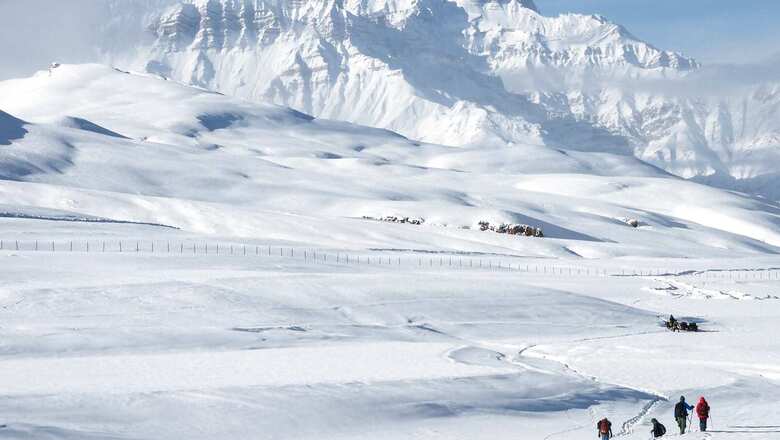
views
The Army has got deliveries of 20 avalanche rescue systems from a Swedish firm this month, nearly two years after it placed an order for the equipment as an emergency procurement, News18 has learnt.
Defence sources told News18 that each of the rescue systems will be sent to different sector stores of the northern command.
So far, only the Gulmarg-based High Altitude Warfare School (HAWS)—which runs specialised training programmes for mountain and winter warfare—had a limited number of rescue systems that were procured last year after successful trials.
This is the first time that the Army has procured an advanced avalanche rescue system, a requirement that was long pending in the backdrop of a large number of soldiers getting killed in avalanches and landslides that have taken place in the last few years in the Siachen glacier and other high-altitude areas of Kashmir and the Northeast.
The Army has deployed basic avalanche victim detectors with ground-penetrating radars, but the advanced systems have the added advantage of transponders that makes detection faster, the sources said.
The 20 avalanche rescue systems were an emergency procurement in 2020 and sources say that the avalanche which killed two Army personnel in Sikkim in May 2020 prompted the move.
How will the new systems work?
Defence sources told News18 that the rescue systems provided by the Swedish firm Recco will have 150 transponders each.
As per the company’s website, the detector of the rescue system emits a radar signal that on hitting the reflector is echoed back to the detector, thus pointing the rescuer in the direction of the victim.
The reflectors, the website states, are lightweight and passive transponders, comprising a diode and antennae, which do not require power or activation to work.
It further states that as a detector gets closer to a reflector, the radar signals turn stronger, giving out the accurate location of the victim to the rescuer.
Sources say more such systems are already in use with civil organisations and the military is likely to procure more of them that could be used in a range of rescue operations aside from avalanches, to rescue victims trapped in landslides or building collapses.
A defence source told News18 that each system will cater to 50 Army personnel at a time, with three reflectors attached to a soldier when he is out on patrol or other operations in an avalanche-prone area.
“When a person is trapped in snow, it is the first 25 minutes that are the most critical. His chances of survival go down after that. And when that happens, one does not know his position. Hence three transponders will be attached to a soldier,” the source said, adding that the new systems will aid in the effective detection of a soldier in such an eventuality.
Past instances
Despite high precautions taken by the Army in deploying troops to high-altitude avalanche-prone areas, a large number of soldiers are killed in snowslides.
About 35,000 troops are deployed in high-altitude areas across the Army’s eastern and northern commands and there are over 2,000 troops posted in Siachen and nearby areas.
Sixty-one people were killed this month in a landslide that hit Tupul in the Noney district of Manipur, of which half were Territorial Army soldiers.
In February, an avalanche in Arunachal Pradesh killed seven Army personnel.
Data shared by the government in Parliament in February 2020 showed that the Army had lost six personnel to avalanches in the Siachen Glacier in 2019, and 11 others in other parts of the country.
In December 2019, the government told Parliament that 74 Army personnel had died in avalanches alone in the previous three years.
One of the reasons for such high casualties is the limited number of people available for recovery operations. The strength can be increased by getting additional troops from other posts using helicopters, but such operations are dependent on the prevailing weather conditions.
The rescue teams carry avalanche victim detectors and coloured avalanche chords for easy detection of victims trapped in the snow. They also carry other equipment such as ice axes, shovels, ropes, and hypothermia blankets.
Troops inducted in high-altitude regions are provided adequate training in mountain craft and ice craft so that they can survive in glaciated terrain in mountains and cope with any eventuality, the government had told Parliament, adding that helicopters, unmanned aerial vehicles, snow scooters, avalanche detectors, and mountain clothing are among the equipment used by troops in such areas.
Read all the Latest News, Breaking News, watch Top Videos and Live TV here.



















Comments
0 comment